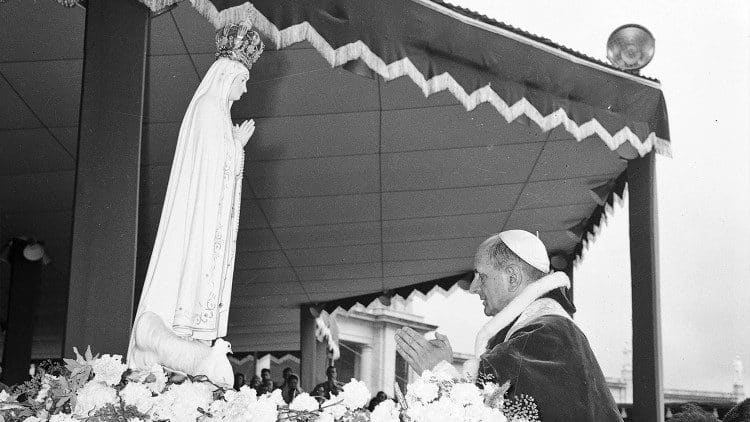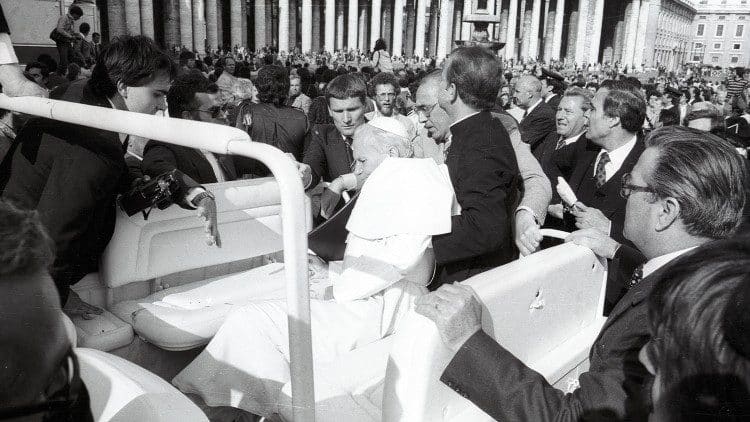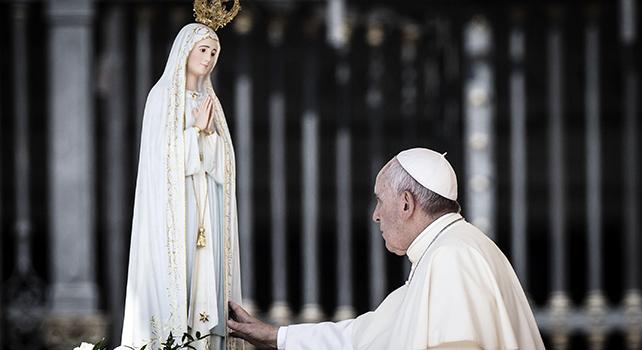Pope Francis is set to visit the Shrine of Our Lady of Fatima for the second time of his pontificate, where three shepherd children received a message in May 1917 from the Blessed Virgin Mary about the future of humanity.
The brief visit to Fatima, which will take place on Saturday, 5 August, via helicopter, was added to the papal pilgrimage to Portugal, which originally included only events in Lisbon for World Youth Day.
In May 2017, Pope Francis had already traveled to the renowned Marian shrine to canonize Francisco and Jacinta Marto, the two young visionaries, on the occasion of the apparitions’ centenary.
The fact that he has decided to return to the feet of Our Lady of Fatima holds significance and reflects the Pope’s intention to address the tragic war afflicting “martyred Ukraine”, attacked by the Russian army, as well as the numerous forgotten conflicts around the world.
This gesture by the Bishop of Rome can be directly linked to another significant act he made just over a month after the outbreak of war: the Consecration of Russia and Ukraine to the Immaculate Heart of Mary, celebrated in St. Peter’s Basilica on 25 March 2022.
The apparition at Fatima had specifically requested the Consecration of Russia in its message to the shepherd children.

Sixteen months ago, Pope Francis fervently prayed, “We have strayed from that path of peace. We have forgotten the lesson learned from the tragedies of the last century, the sacrifice of the millions who fell in two world wars. We have disregarded the commitments we made as a community of nations. We have betrayed peoples’ dreams of peace and the hopes of the young… Star of the Sea, do not let us be shipwrecked in the tempest of war… Free us from war, protect our world from the menace of nuclear weapons.”
Fatima and 20th century Popes
The apparitions at Fatima are closely linked to the Popes of the 20th century, intertwining with their personal biographies.
Pope Benedict XV, amidst the horrors of World War I, decided on 5 May 1917, to add the invocation “Queen of Peace, pray for us” to the traditional Litany of Loreto recited after the Rosary.
A few days later, on 13 May, the first apparition of Our Lady of Fatima occurred.
This event coincided with the day Pope Benedict XV consecrated Bishop Eugenio Pacelli in the Sistine Chapel, who would later become his second successor, Pius XII. On 31 October 1942, Pius XII consecrated “the peoples separated by error or discord” to the Immaculate Heart of Mary.
In May 1967, Paul VI became the first Pope to make a pilgrimage to Fatima, when he visited Portugal as it was still under the regime of the dictator Salazar, to commemorate the 50th anniversary of the apparitions.
Just before his departure, Pope Paul VI explained, “The spiritual motive, which seeks to give this journey depth of meaning, is to once again, with greater humility and intensity, pray for peace.”
In his homily at Fatima, he urged, “Do not entertain thoughts of destruction, death, or revolution… Reflect on projects that promote common comfort and solidarity. Recognize the gravity and magnitude of this hour, which may prove decisive for the present and future generations.”
Paul VI vividly described the gravity of the historical situation, highlighting the “great arsenal of terribly deadly weapons” misaligned with moral and technical progress, juxtaposed with the state of poverty and destitution faced by “the majority of humanity”.
“It is for this reason that we say that the world is in danger,” he said. “It is for this reason that we have come to the feet of the Queen to implore peace, a gift which only God can bestow… Observe how the outlook of the world and its destinies are presented here in immense and dramatic form.”
The blood of Pope John Paul II and the message of Pope Benedict XVI
However, it was Pope John Paul II with whom the story of Fatima and the message to the shepherd children, kept secret until the year 2000, became inseparably intertwined with the life of a Successor of Peter.

On 13 May 1981, at 5:17 p.m., John Paul II was severely wounded in an assassination attempt in St. Peter’s Square, perpetrated by Turkish terrorist Ali Agca.
The Polish Pope was brought to the Gemelli Hospital covered in blood and on the brink of death, and he came to regard his survival as miraculous.
Nineteen years later, he revealed the third secret of Fatima, which described a “bishop dressed in white” walking through a ruined city and ultimately being killed—an image he attributed to himself.
John Paul II, during his lengthy pontificate, visited the Portuguese shrine three times: in 1982, 1991, and finally during the Great Jubilee Year of 2000.
His successor, Benedict XVI, also embarked on a pilgrimage to Fatima during his 2010 visit to Portugal.
He declared, “The person who thinks the prophetic mission of Fatima is concluded would be deluding themselves.”
During the outbound flight, responding to a journalist’s question, Pope Benedict also addressed the abuse crisis, acknowledging, “As for the new things which we can find in this message today, there is also the fact that attacks on the Pope and the Church come not only from without, but the sufferings of the Church come precisely from within the Church, from the sin existing within the Church. This too is something that we have always known, but today we are seeing it in a really terrifying way: that the greatest persecution of the Church comes not from her enemies without, but arises from sin within the Church, and that the Church thus has a deep need to relearn penance.”
Andrea Tornielli -Vatican News










